Hi everyone, I’m back this month with more on trendwatching, but make sure you go back and read Part 1 before you go ahead and read this one. Part 1 was talking about HOW I think about trends and this post is a real-world developing-around-us example of that philosophy.
Back? Great. So last month I talked about how important it is to think about trends as layers, and that the deeper you go the further ahead you can see. So for me, first layer would be looking at book covers coming out from other publishers — well, that’s really too late, because book covers have to be designed about a year ahead of when the book’s on sale date is. You can get a little info about which genres are trending up by looking at self-publishing because self-publishing authors can publish much more quickly and what’s popular in the Kindle store, for example, can let you know that Steampunk and Urban Fantasy were coming back sneakily under different names (more on that in Part 3). However (and I’m not trying to be a snob here) most self-published books do not have the quality of art that is an influence on what I’m doing. Sometimes we can pick up on genre checkpoints developing among the fanbase, but for the most part, self-published covers are copying what I’m doing, not the other way around. So next layer is looking at related media (films, video games, physical games) and that can be a little ahead of books trend-wise, sometimes. Then the next layer down I look at unrelated but faster-adapting worlds that give me a better idea of what’s coming down the pipeline to affect books: Music & Fashion especially. That’s usually where my trend alarms start to go off. Music & Fashion move the fastest because they have the youngest fanbase and have much shorter production schedules than a book does.
Once I’m starting to feel a trend bubbling up in Music and Fashion, I have to look around to see WHY that trend is happening. All trends are Culture, and Culture is affected by a lot of things. Politics, news, economy, etc. This becomes a half academic half gut instinct exercise. Academically, we can talk about the concept of the Collective Unconscious as first described by Carl Jung. Jung’s work affects what we do in SFF quite a lot because of how much of his work deals with Archetypes. (By Archetypes I mean recurring tropes that happen in every human culture and repeat over and over in our stories. For example, Merlin, Gandalf, Mr. Miyagi, and Obi-Wan Kenobi (in Episode 4) are all versions of the same wise old (usually mystical) mentor. If you want to know more about this & how it affects storytelling, check out this post on Joseph Campbell) Archetypes exist in the “Collective Unconscious” which is the group subconscious of us as an entire race. If you think of it as layers, you have your conscious mind (aware thoughts, verbal-based), your subconscious/unconscious mind (unaware thoughts, reactions, dreams, image-based), and then deeper than that is the collective unconscious. People use subconscious and unconscious kind of interchangeably, but if you’re going to get really specific, some folks use the terms as if the subconscious mind is kind of the waiting room between the unconscious & the conscious. Some folks use the term subconscious to mean our own personal unconscious and then unconscious to describe the collective unconscious.
Often we see this Iceberg Metaphor:
So the conscious mind is the bit above the water, our subconscious (or subconscious and personal unconscious) are our hidden desires, dreams, biases, family patterns, trauma, all that good therapy material. And the Collective Unconscious is the ocean the iceberg is sitting in. The currents in that ocean are trends.
Ok so on to example time. I’m going to try to put this together for you as it came together for me, so you can track my thought process.
So as we discussed last post, the high pandemic years made us all reach for self-soothing escapism. The folks whose flavor of escapism was a blanket and a cup of tea made Cozy Fantasy really popular. And the folks that had a spicier flavor of escapism made Romantasy really popular. Those trends are surfaced to the top layer of trend watching — every publisher has a lot of cozy and spicy books coming out, and the genre checkpoints on those covers are getting more solidified — a process that starts semiconscious/gut instinct level and now is actively conscious. Cozy tends to be a rounder, younger, softer style of illustration with more pastel tones than we usually see on SFF covers. Romantasy covers have the interesting problem of not being able to show it’s spiciness level on its cover, so there’s a lot of swords & flowers and big type—so more of a design-forward look. But there’s a darker, more gothic strain of Romantasy that is more about the setting and the character, and that strain of Romantasy felt like it hadn’t quite emerged all the way yet.
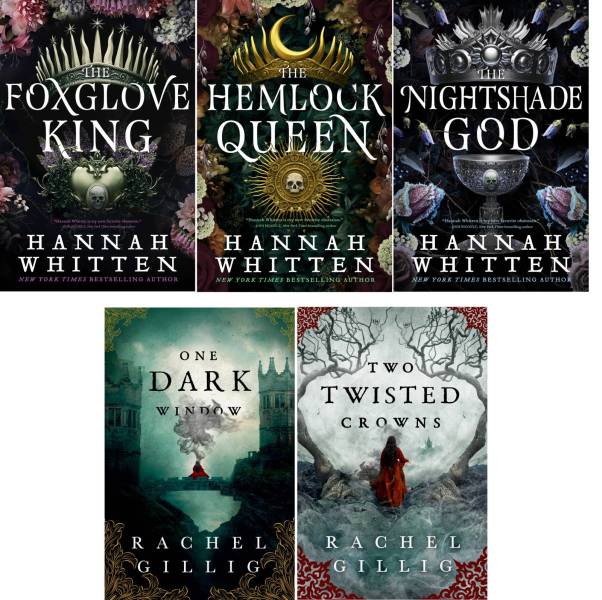
All are Orbit Cover designs by Lisa Marie Pompilio. Hannah Whitten covers have 3D sculpted illustrations by Mike Heath/Magnus Creative
I started noticing a few things. Some of it was sitting in my subconscious while a pattern was forming. I think first I noticed a lot of pattern was coming back. And a very specific kind of historic kind of pattern. I saw a LOT of William Morris suddenly, everywhere I looked. Wallpaper in restaurants. Home design trends. I noticed the Ruggable x Morris & Co. collection and I think that’s when it started bubbling thru the conscious/subconscious barrier.
Then I started seeing more and more chain mail inspired jewelry and fashion getting hot.
I had multiple spontaneous conversations with creative women in my life talking about Hildegard of Bingen, the proto-feminist visionary medieval nun. Usually quite a deep cut, but suddenly she was influencing…underwear?
And it wasn’t a fluke. Multiple lingerie designers all at once.
Meanwhile Lisa on my team (who designed the covers above) started working on the new Rachel Gillig book, which had (surprise!) a lady knight. Now Lisa has even more finely tuned trend instincts than I do and we both said YES. WE NEED A WOMAN IN ARMOR ON THE COVER. However, when most of the genre was following our Hannah Whitten flower-and-icon look it wasn’t an automatic approval. We made a mood board to explain why we felt this was the right direction for the cover even though it wasn’t quite what we were seeing on other Romantasy books (the upper left image was a very rough mockup of what Lisa wanted to do):
And then, as we were in the middle of getting the cover finalized, Chappel Roan showed up at the MTV Music Awards with multiple looks and a main performance that was so very very medieval/Joan of Arc:
And suddenly all anyone could talk about was Castlecore. Even Pinterest named it a trend of 2025. We knew we hit the exact right look for Rachel Gillig’s new book, and when we released it online, fans lost their minds.
And so did Barnes & Noble, who wanted a special exclusive edition with all the bells and whistles and sprayed edges.
Let’s just say that you should expect to see a LOT of Romantasy books with Ladies in Armor, because the wave is just starting to hit. I have another gorgeous cover on deck I can’t reveal yet. By the time these books go on sale, the Castlecore moment will be huge and they’ll be perfectly timed to fall right into the hands of folks looking for them. If I were an artist working in SFF right now, I would think hard about adding some armor & medieval motifs to my portfolio.
Of course there’s no guarantee that trends keep picking up momentum — some waves fade away without breaking — but with a Baz Lurhman Joan of Arc movie in production, and a medieval bar he designed freshly open in New York, I feel pretty confident this trend is going to have long legs. Everywhere I look I see medieval tapestries, patterns, armor, pre-Raphaelite art etc. There are whole instagram accounts dedicated to Medieval Psychedelia and influencers that are hosting medieval saint parties. Tassels are a trend again!
This Medieval thinking isn’t going anywhere anytime soon. But why?
If we look around, we can see that this “Castlecore” trend is part of a larger obsession growing within our (US/Western European) Culture for all things medieval. Ok. Why are we suddenly looking at medieval things? Well, it helps to look back. When did this happen before? (It has ALWAYS happened before — trends are cyclical, wait for Part 3). So if we look, We’ve seen this “neo-medievalism” before. The return of medieval style hit last with the Arts & Crafts Movement and Pre-Raphaelite Art style. And why? As a direct response to people’s fears about the Industrial Age taking over Europe. This fear was justified, as Industrialism led directly into World War I. It’s not a far leap to realize we are having the same kind of fear as a culture responding to the rise of AI and the potential for a real and virtual/digital World War III. The more slick and human-less AI tech becomes, the more people crave things obviously made by a human hand. That’s why we’re seeing an avalanche of texture and historical pattern everywhere. It’s a repeat of the cultural response we’ve already seen towards more abstract illustration and exposed bricks and raw denim of the 2010s away from the CGI-slick feel of the late 90s and 2000s.
We can even go a level deeper and see that there are parallels going on politically as well. Medieval Times (aka the “Dark Ages”) was the period after the fall of the Roman Empire. And looking at both the US and Europe right now, a lot of folks have both conscious and subconscious fears that these “empires” are about to fall as well. The war in Ukraine, the conflict between Palestine and Israel…these conflicts are also adding to the fear and anxiety we feel. And whatever enough of us feel makes it into our Collective Unconscious. It makes sense that people are reaching out unconsciously to the past because of cycles that are reoccurring… But more on that next month!


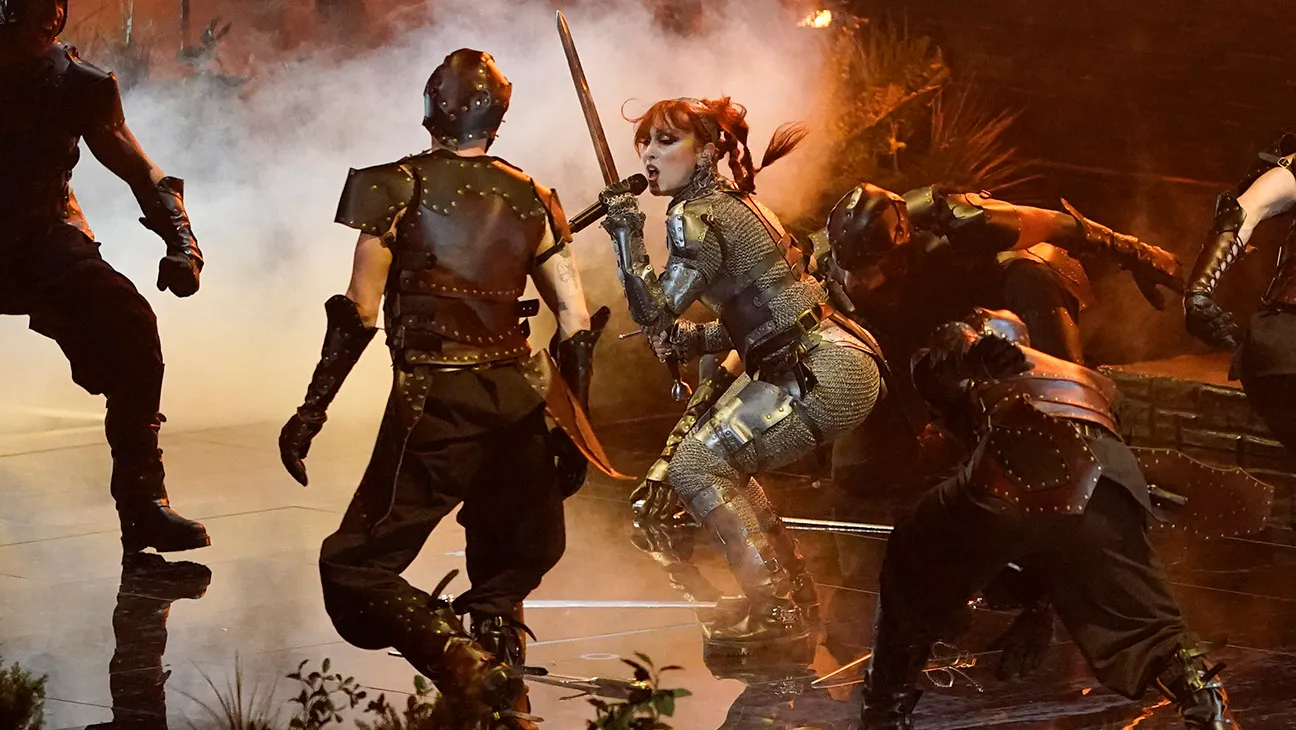
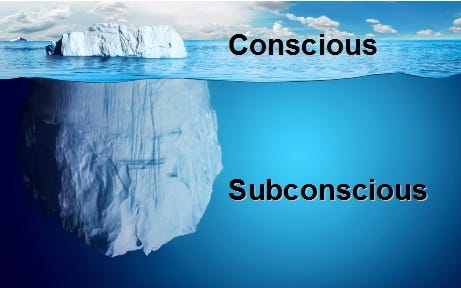


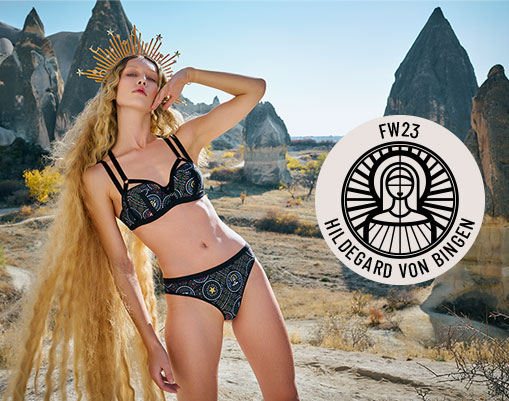

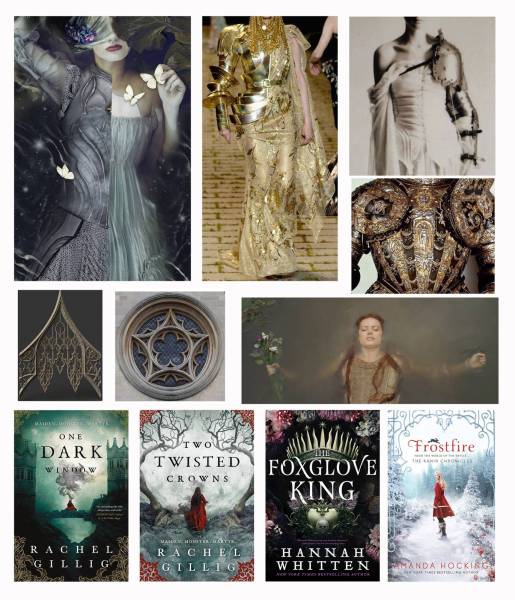
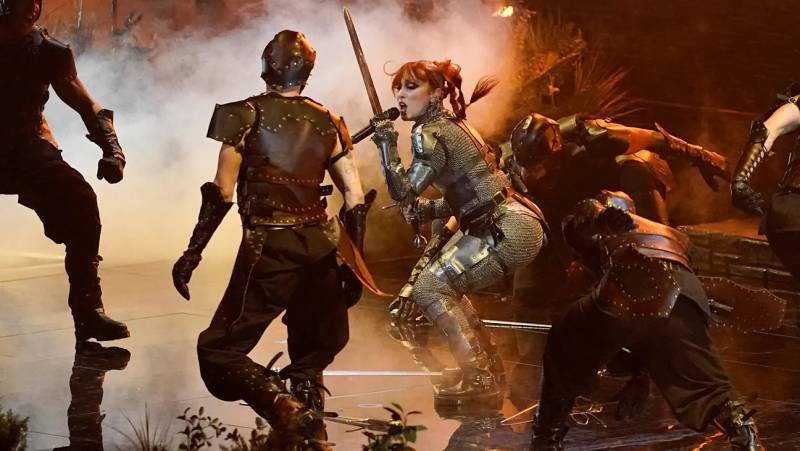
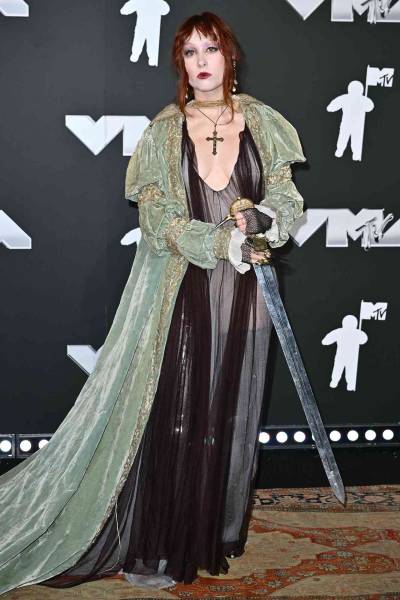
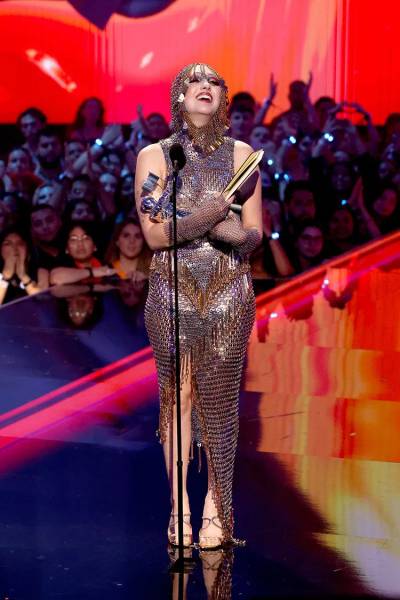
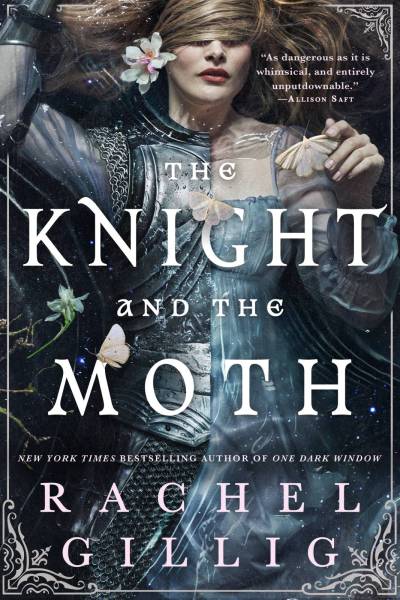
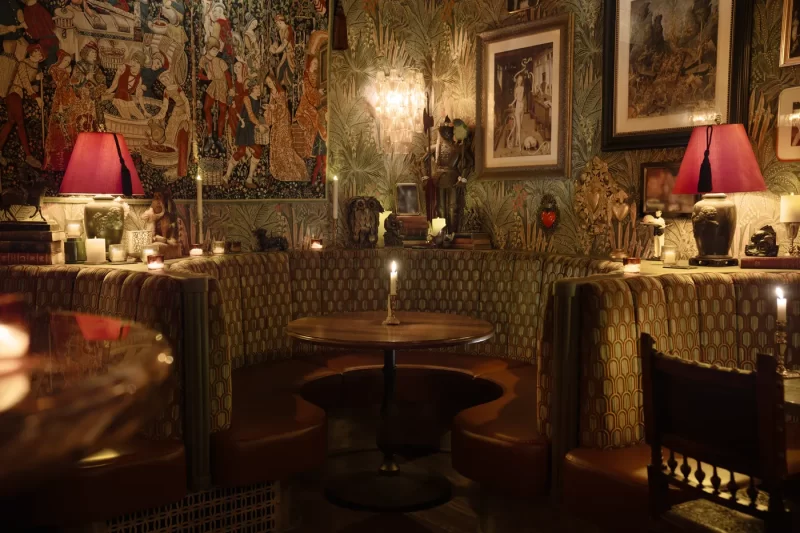
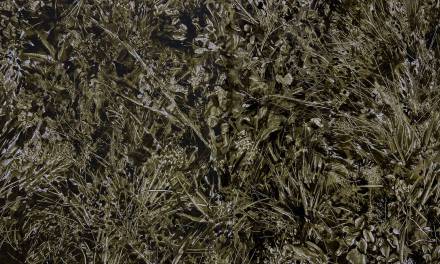
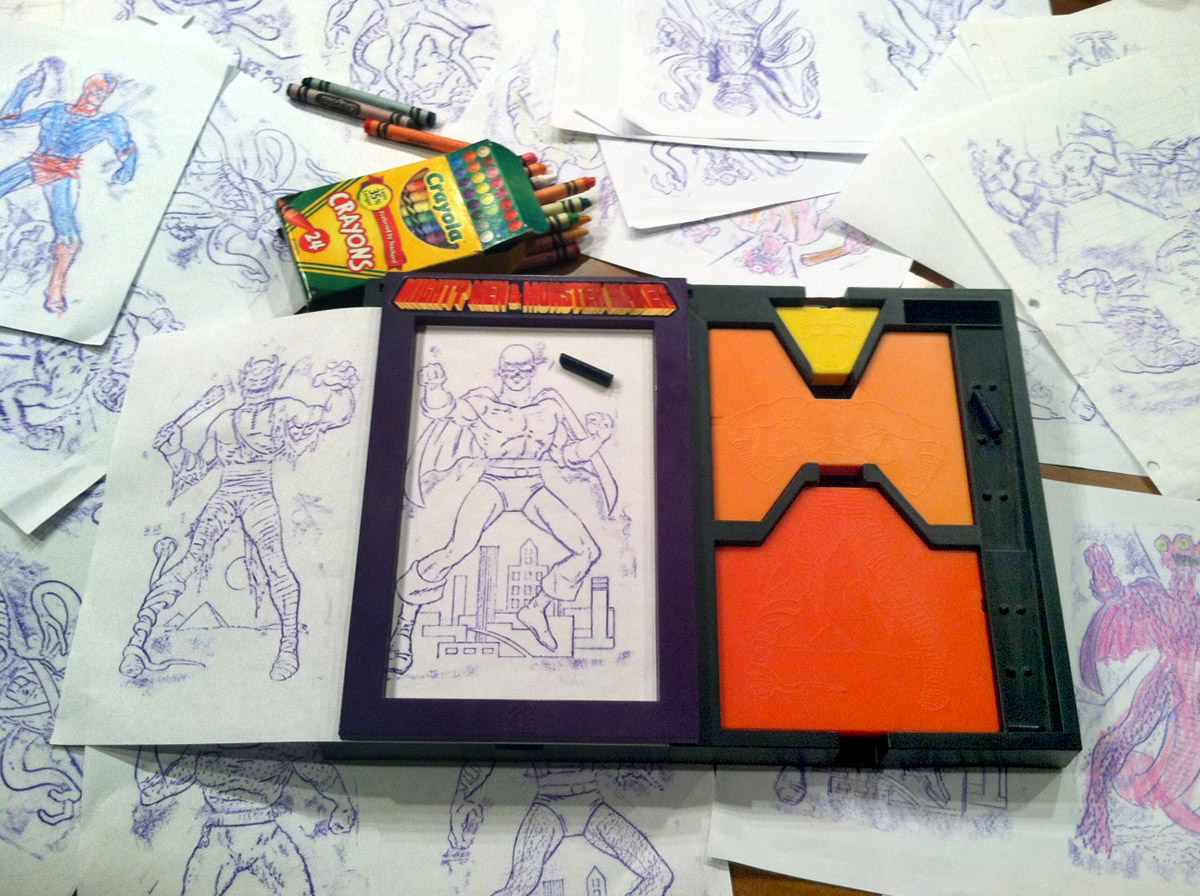
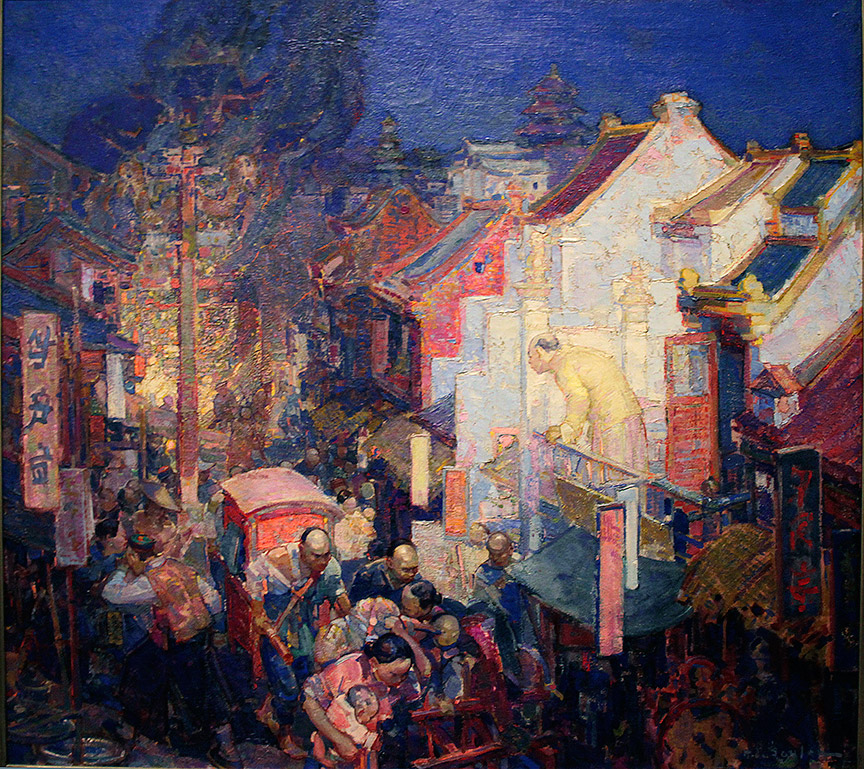
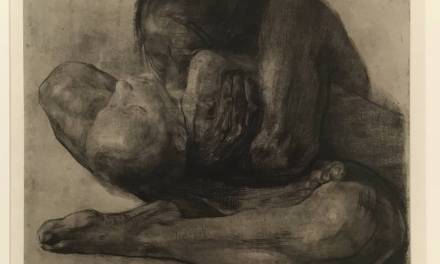
There was actually a huge resurgence of Medievalism more recently than that! We saw a massive bump in the 60s leading up into the 70s. And there certainly weren’t any huge cultural shifts in the late 60s–70s, right? <_<
Besides being a designer, I'm also an art historian, so let me put in that hat for a moment. "Medievalism" is the academic name for when we look back to a (usually Eurocentric) medieval past from any point after the period, usually creating a fictional version of that past to use it (knowingly or unknowingly) for political/cultural reasons. And it's been happening regularly since the medieval period, often for the sort of reasons you described.
In the 60s we saw it in music (folk revival), clothing (hippie peasant blouses), architecture, typography… Everywhere. But most important to note is that they themselves were looking backward to the 19th century Romantic past, which had fictionalized the period based on _their_ impressions derived from the fictional impressions in the 1700s, etc etc. It's all a bunch of romanticized, curated, sometimes-invented history, wielded as a tool. In that way, we're doing the same thing people have been doing for hundreds of years: self-soothing through the rose-colored reinvention of the past.
Interesting, right?
Absolutely! Thanks for weighing in. It’s true about the 60s/70s. I think I have always thought about it as more of a return to Romanticism that brought back more of an Art Nouveau and as you say Romance Poets era vibe, and now we’re in more of a tapestry & armor moment, but it’s the same human impulse.
Super-interesting thoughts and ideation process! I am going to LOVE the castlecore vibe. When I mentioned this coming trend to my coworker, she immediately thought of the book covers for the Winter’s Promise series–kind of a hand-drawn medieval fantasy spin.
I wonder if the incoming “armor and tapestries” covers will continue to have a similar style to the current ones (seem largely photorealistic and/or heavy graphics), or maybe start to swing toward a more illustrative look?
Thanks for a fascinating article, Lauren; I look forward to part three (and finding out the new name for Steampunk and Urban Fantasy).
Fascinating article, thank you Lauren! As an artist that loves Castlecore and medieval crafts, I’m looking forward to seeing a whole bunch more too Courtney! I’m hoping for more illustrative things; but I’m bias of course 😀
And I cannot let mention of Hildegard of Bingen going by without letting folks know of the excellently named and beautifully voiced ‘Hildegard von blingin’ on youtube, purveyor of bardcore covers and also beautiful versions of Hidegard’s original compositions. Well worth a listen!
@Carly omg “Bardcore” lol. Thank you for sharing this, Im obsessed. https://www.youtube.com/watch?v=V7jOobdrdGo
Haha, you are welcome! Love that cover, and I’ve had her Billie Eilish cover on more times than I’d like to admit 🙂
@Courtney: Cute series covers! As for the question about whether the medieval style is going to stay photo or spread to illustration…I know that it IS spreading to illustration…but I can’t reveal the covers I know are coming yet!
Eeeeee!
That is all.
Lauren, a substack where you track trends like this would be an essential subscription for illustrators, as far as I’m concerned. Consider it.
Thanks Steven, many folks tell me all the time to monetize my content either in patreon, substack, kickstarters, TikTok, books, etc. and I’m flattered but unfortunately I don’t have time for a side hustle, I force myself to fit in Muddy Colors as a education service to the community, but until I don’t have my position at Orbit I’m just not going to have the time to do much else.
This is fascinating. Thanks for sharing. As an artist interested in book covers and illustration, this kind of thinking sounds crucial for designing portfolios and developing pieces with my clients. Thank you. I reread these articles a lot.